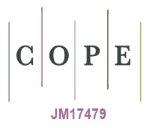Hyperfactord of Shi arrangement Sh(A2) and Sh(A3)
DOI:
https://doi.org/10.23851/mjs.v33i3.1139Keywords:
Hyperplane arrangement, Briad arrangement, Shi arrangement.Abstract
In this paper, we introduce the region and the faces poset of shi arrangement that J. Y. Shi firstly introduced it. This is an affine arrangement, each of whose hyperplane is parallel to some"hyperplane of Coxeter arrangement"(Braid arrangement), the degrees and the exponents of this arrangement were found and we prove the shi arrangement is ahyperfactored arrangement when n=3 and not hyperfactored arrangement when n=4 arrangement.
Downloads
References
Stanley, R. P. An introduction to hyperplane arrangements. Geometric combinatorics, 13(389-496), 24, 2004.
Shi, J. Y. The Kazhdan-Lusztig cells in certain affine Weyl groups. Lecture notes in Mathematics, 1179, 1-307, 1986.
Abebe, R. Counting regions in hyperplane arrangements. Harvard College Math Review, 5.
Rincón, F. A Labelling of the Faces in the Shi Arrangement. Rose-Hulman Undergraduate Mathematics Journal, 8(1), 7. 2007.
Denham, G. Hanlon and Stanley's conjecture and the Milnor fibre of a braid arrangement. Journal of Algebraic Combinatorics, 11(3), 227-240, 2000.
Rhoades, B., & Armstrong, D. The Shi arrangement and the Ish arrangement. Discrete Mathematics & Theoretical Computer Science, 2011.
Fishel, S. A survey of the Shi arrangement. In Recent Trends in Algebraic Combinatorics (pp. 75-113). Springer, Cham, 2019.
Athanasiadis, C. A. A class of labeled posets and the Shi arrangement of hyperplanes. Journal of combinatorial theory, Series A, 80(1), 158-162,1997.
Levear, D. A bijection for Shi arrangement faces,2019.
Steinberg, R. (1960). Invariants of finite reflection groups. Canadian Journal of Mathematics, 12, 616-618, 1960.
Downloads
Key Dates
Published
Issue
Section
License
Copyright (c) 2022 Al-Mustansiriyah Journal of Science

This work is licensed under a Creative Commons Attribution-NonCommercial 4.0 International License.
(Starting May 5, 2024) Authors retain copyright and grant the journal right of first publication with the work simultaneously licensed under a Creative Commons Attribution (CC-BY) 4.0 License that allows others to share the work with an acknowledgement of the work’s authorship and initial publication in this journal.






















